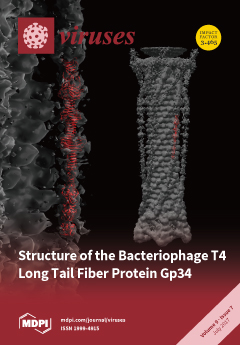Open AccessArticle
Effective Suckling C57BL/6, Kunming, and BALB/c Mouse Models with Remarkable Neurological Manifestation for Zika Virus Infection
by
Jianhai Yu, Xuling Liu, Changwen Ke, Qinghua Wu, Weizhi Lu, Zhiran Qin, Xiaoen He, Yujing Liu, Jieli Deng, Suiqi Xu, Ying Li, Li Zhu, Chengsong Wan, Qiwei Zhang, Weiwei Xiao, Qian Xie, Bao Zhang and Wei Zhao
Cited by 30 | Viewed by 7961
Abstract
Since 2015, 84 countries and territories reported evidence of vector-borne Zika Virus (ZIKV) transmission. The World Health Organization (WHO) declared that ZIKV and associated consequences especially the neurological autoimmune disorder Guillain–Barré syndrome (GBS) and microcephaly will remain a significant enduring public health challenge
[...] Read more.
Since 2015, 84 countries and territories reported evidence of vector-borne Zika Virus (ZIKV) transmission. The World Health Organization (WHO) declared that ZIKV and associated consequences especially the neurological autoimmune disorder Guillain–Barré syndrome (GBS) and microcephaly will remain a significant enduring public health challenge requiring intense action. We apply a standardization of the multi-subcutaneous dorsal inoculation method to systematically summarize clinical neurological manifestation, viral distribution, and tissue damage during the progress of viremia and systemic spread in suckling mouse models. We found that C57BL/6 and Kunming mice (KM) both showed remarkable and uniform neurologic manifestations. C57BL/6 owned the highest susceptibility and pathogenicity to the nervous system, referred to as movement disorders, with 100% incidence, while KM was an economic model for a Chinese study characterized by lower limb weakness with 62% morbidity. Slight yellow extraocular exudates were observed in BALB/c, suggesting the association with similar ocular findings to those of clinical cases. The virus distribution and pathological changes in the sera, brains, livers, kidneys, spleens, and testes during disease progression had strong regularity and uniformity, demonstrating the effectiveness and plasticity of the animal models. The successful establishment of these animal models will be conducive to expound the pathogenic mechanism of GBS.
Full article
►▼
Show Figures






